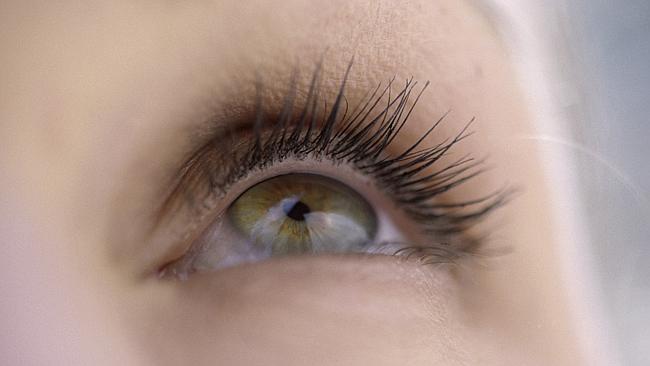
The six patients were allegedly left with scarred eyeballs after the wrong eye drops were used. Picture: Thinkstock Source: Supplied
SIX patients who had routine laser eye treatment at a Brisbane eye clinic are suing after they were left partially blinded by scarring of their eyes.
The patients all had their treatment at Vision Eye Institute’s Upper Mt Gravatt clinic, in January 2012, according to court documents filed in the Supreme Court.
All were allegedly left with scarring to their eyeballs after the wrong eye drops were used during laser surgery by eye surgeon James McAlister.
Two patients — Aaron Liboiron, 22, from Southport and electrical engineer Cameron Jones, 25, from Sunnybank Hills — allege they have scarring on both their eyes from the eye drops, according to their claims.
Mr Jones, like the others, has had to have corneal transplants to correct the damage.
Varun Lal, 27, from Runcorn, and business analyst Garry Whitehead, 40, of Hamilton, had surgery on their right eyes then transplants to correct it, as said in court documents. They face further surgery as transplants only last 10 to 12 years.

Garry Whitehead had surgery on his right eye then transplants to correct it’. Pic: Tara Croser Source: News Corp Australia

Garry Whitehead after the surgery. Source: Supplied
All of the patients were trying to halt degeneration caused by keratoconus, a disease that occurs mainly in sufferers aged in their mid-teens through to their 30s.
The treatment is called “corneal cross-linking” and uses vitamin B2 and ultraviolet light. It has been used for the past 15 years.
In documents filed with the Supreme Court the patients blame Dr McAlister and the pharmacist who made the eye drops, Nicholas Bova, claiming they were negligent. The patients are also suing Mr Bova and Dr McAlister.
On February 1, three weeks after the surgery, Dr McAlister told patient Mr Jones that he “had got twice the dosage” of the eye drops, as said in court documents.
Later Dr McAlister discovered that wasn’t the problem, rather the drops contained “dextran sulfate” instead of “dextran”, as said in court documents.
Dr McAlister prescribed the correct drops but concedes in court documents that the eye drops he used were the wrong ones.

Dr James McAlister administered the eye drops but blames the pharmacist who made the drops. Source: News Corp Australia
He points the finger of blame at Nicholas Bova, a Sydney compounding pharmacist, who made the drops, the case file says.
In court documents expert ophthalmologist Peter Beckingsale says five patients treated by Dr McAlister on January 6 “developed severe corneal haze and scarring”.
Sydney ophthalmic surgeon Michael Delaney told the court that the haze and scarring was “due directly” to the use of the chemical “dextran sulfate”.
“Dr McAlister as the treating surgeon must bear the overriding responsibility to ensure that the treatment provided to Mr Jones was appropriate and correct,” he says.
Pharmacologist Penelope Thornton told the court that Mr Bova failed to follow the prescription and fell short of a “competent compounding pharmacist” because he didn’t realise dextran sulfate was “inappropriate” for eye surgery.
In court documents, Mr Bova says he can’t be held responsible because the composition of the drops was clearly stated on the bottle.
The Health Quality and Complaints Commission found that Dr McAlister was not responsible for the error and referred the complaint about Mr Bova to NSW authorities.
A search of the Australian Health Practitioners Regulation Agency shows NSW authorities last year restricted Mr Bova from “personally compounding any pharmaceutical products for human use”. They refused to say what triggered the restriction, citing confidentiality.
Most of the patients are suing a subsidiary of Australia’s largest provider of ophthalmic care, the publicly listed company Vision Eye Institute, court documents show.
Bill King, of Shine Lawyers, said mistakes in the administration of drugs were one of the most common errors.
******
HAMILTON business analyst Garry Whitehead’s right eye looked so bad after the surgery that kids used to see in the street and compare him to the movie character The Terminator.
“I will be sitting in a line for coffee and they will say ‘You look like The Terminator’,” he said.
Mr Whitehead, 40, was left with a completely clouded cornea after the cross-linking procedure on January 20, 2012.
In the months following the surgery, his eye became so inflamed that painful ulcers developed and his doctors were forced to sew it shut to save his sight.
“It was sewed shut for three months, it was horrible. I begged to have it unstitched,” he said.
He later had a cornea graft to improve his sight, but mostly the surgery has improved the appearance of his eye and Mr Whitehead’s sight remains poor.
He said he felt uncomfortable because he attracted stares in public as his right eyelid had become droopy and his eye was a different colour. “My level of self-confidence has changed quite dramatically, I used to be quite outgoing, ’’ he said.
